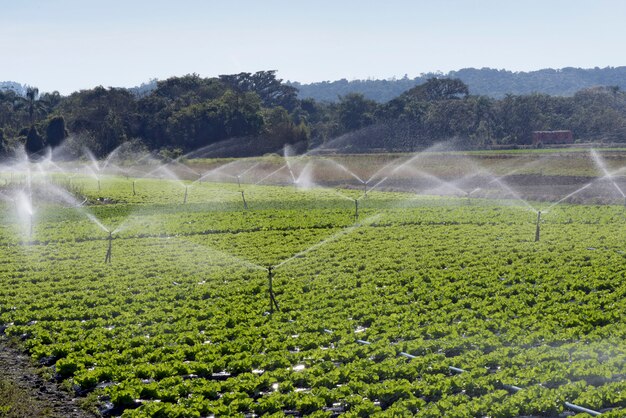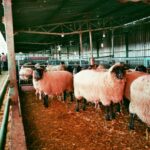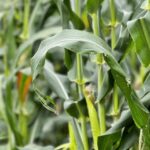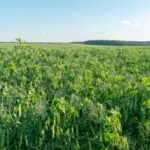Irrigation is a crucial component of modern farming, especially in South Africa, where water scarcity can pose significant challenges to crop production. Proper irrigation management can improve crop yields, conserve water, and save on energy and labor costs. However, many farmers still make common mistakes when it comes to irrigation practices, which can lead to inefficiencies and poor crop performance. In this article, we will explore 10 common mistakes in irrigation management and provide tips for South African farmers to avoid them.
1. Overwatering or Underwatering Crops
One of the most common irrigation mistakes is applying too much or too little water to crops. Overwatering can lead to waterlogging, root rot, and reduced oxygen levels in the soil, while underwatering can stress crops, leading to poor growth, reduced yields, and even crop failure.
Solution: Properly monitor soil moisture levels using tools such as tensiometers, soil moisture sensors, or simple visual checks. Adjust irrigation schedules based on the crop’s water needs, the weather, and soil type.
2. Ignoring Soil Type and Characteristics
Soil type plays a significant role in how water is retained and drained. Failing to account for the unique characteristics of the soil can lead to uneven water distribution, affecting crop health.
Solution: Understand your farm’s soil texture and structure. Sandy soils drain quickly and may require more frequent watering, while clay soils retain moisture for longer periods and need less frequent irrigation. Tailor your irrigation system to match the soil’s water-holding capacity.
3. Improper Irrigation Scheduling
Inconsistent irrigation schedules or failing to adjust irrigation times based on weather conditions can waste water and hinder crop growth. For instance, irrigating during the hottest part of the day causes water to evaporate quickly, reducing efficiency.
Solution: Irrigate during early morning or late afternoon when temperatures are lower and evaporation rates are minimal. Use weather forecasts and crop growth stages to adjust irrigation schedules for optimal water usage.
4. Poorly Maintained Irrigation Systems
Clogged filters, broken pipes, and malfunctioning sprinklers or drippers are common issues in irrigation systems. Neglecting maintenance can lead to uneven water distribution, wasted resources, and higher operational costs.
Solution: Regularly inspect and maintain your irrigation system. Clean filters, check pipes for leaks, and ensure that sprinklers and drippers are functioning correctly to ensure even water distribution.
5. Failure to Account for Crop Water Requirements
Different crops have different water needs, and failing to account for this can lead to inadequate or excessive irrigation. For instance, high-water-demand crops like maize may require more water than drought-tolerant crops such as millet.
Solution: Understand the specific water needs of your crops and adjust your irrigation system accordingly. Use crop water requirement tables and consult local agricultural extension services for crop-specific irrigation guidelines.
6. Not Using Water-Efficient Irrigation Methods
Traditional flood or furrow irrigation methods can be inefficient, especially in areas where water resources are limited. These methods often result in water wastage through evaporation or runoff, leading to increased costs.
Solution: Consider more efficient irrigation methods, such as drip irrigation or micro-sprinklers, which target water directly to the plant roots, minimizing water loss and ensuring better crop growth.
7. Ignoring Rainfall Data
Relying solely on irrigation without considering rainfall can lead to water wastage and unnecessary costs. Ignoring weather patterns and rainfall data can lead to irrigation at times when crops do not need it.
Solution: Track rainfall patterns and use weather forecasts to adjust irrigation schedules. Implement a rain gauge or use weather apps that help you monitor rainfall data and determine when irrigation is needed.
8. Not Considering Evapotranspiration (ET) Rates
Evapotranspiration (ET) is the combined process of water loss from soil and plant surfaces through evaporation and transpiration. Ignoring ET rates can result in either overwatering or underwatering, which can stress crops.
Solution: Monitor ET rates using local weather stations or online tools. Adjust irrigation based on ET rates, taking into account factors like temperature, humidity, and wind speed, which affect water loss from the soil and plants.
9. Inadequate Irrigation System Design
An inefficiently designed irrigation system can cause uneven water distribution, which may harm crops. For example, sprinklers placed too far apart may lead to dry patches, while those placed too close together may waste water on already-wet areas.
Solution: Ensure that your irrigation system is properly designed to provide uniform water coverage across your crops. Consider factors such as the crop layout, soil type, and local climate when designing your system.
10. Neglecting Water Conservation Practices
Water conservation is critical in South Africa, where water scarcity is a major concern. Failing to implement water-saving strategies, such as rainwater harvesting or soil moisture management, can exacerbate the impact of droughts and lead to increased irrigation costs.
Solution: Implement water conservation practices like mulching to retain soil moisture, using rainwater harvesting systems, and planting drought-resistant crop varieties. Additionally, consider using sensors and automation to optimize irrigation efficiency.
Effective irrigation management is essential for maximizing crop yields while conserving water and reducing costs. By avoiding these common mistakes, South African farmers can improve their irrigation practices, increase crop productivity, and make the most of their available water resources. Remember to tailor your irrigation practices to your specific farm conditions, monitor regularly, and adopt new technologies to ensure that water is used efficiently and sustainably.
Join 'Farmers Mag' WhatsApp Channel
Get the latest Farming news and tips delivered straight to your WhatsApp
CLICK HERE TO JOIN






